This is part of a series of posts about the Nikon D5. The series starts here.
OK, back to the bookcase, this time to look at the effects of pushing in post processing and in the camera at high ISOs. I made a series of images at 3200 with successively reduced exposures and pushed them back up the same amount in post, Then I made a set at the same exposures, but increased the ISO setting in the camera as I went.
Here’s the setup:
- Camera on tripod
- Nikon 24/1.4 lens set to f/8 (stopped down so I could do the big pushes without turning off EFCS).
- Base shutter speed 1/15 seconds for ISO 3200 shots, equivalently faster for higher ISOs.
- ISO 3200 for the pushed posts, ISO 3200, 6400, 12800, 25600, 51200, 102400 for the unpushed ones.
- EFCS
- Shutter delay = 3 seconds
- Liveview focusing
- Developed with Lr 2015.5
- Default settings except for below
- Sharpening off
- Noise reduction off
- WB to the normal exposure, and applied that to all others
Here’s the overall scene:
Here are a series of 200% crops:
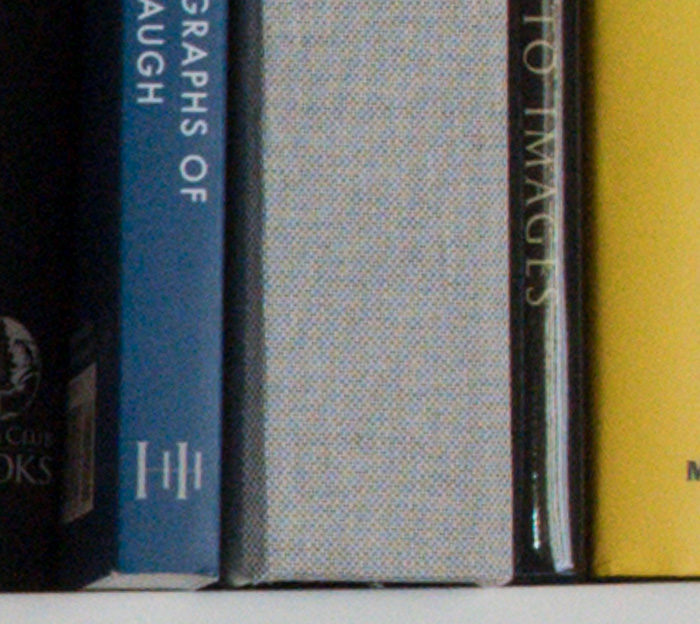
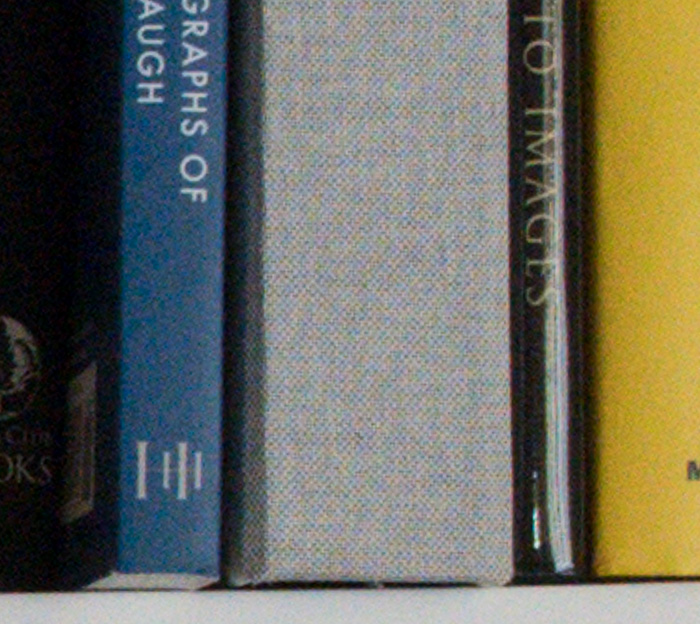
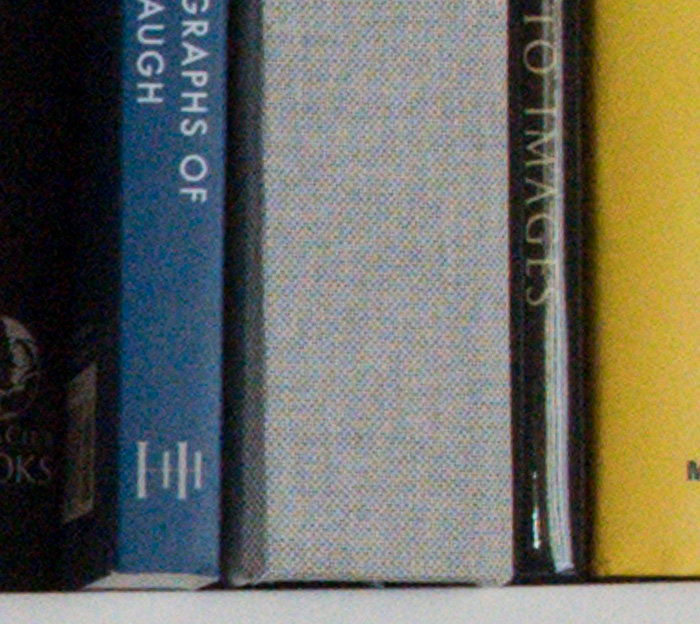
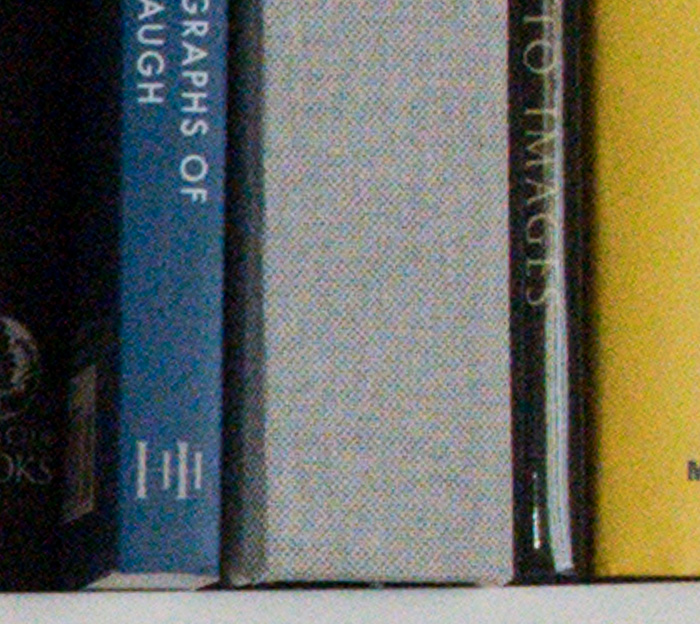
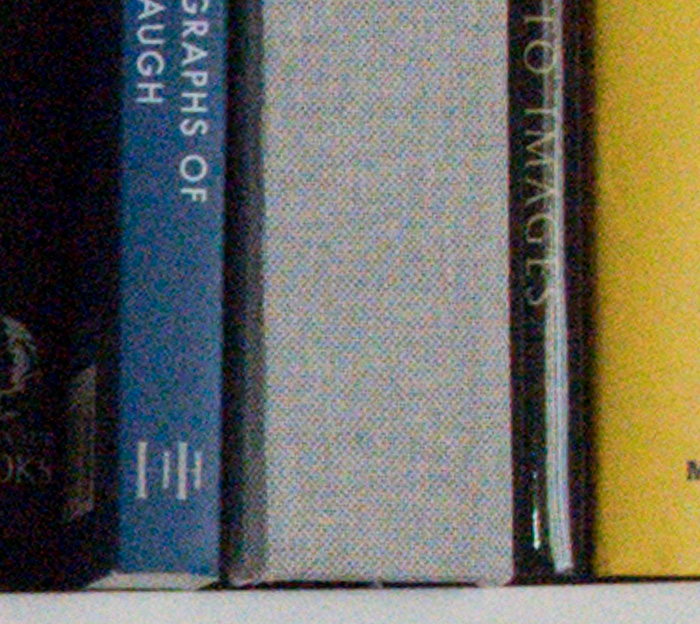
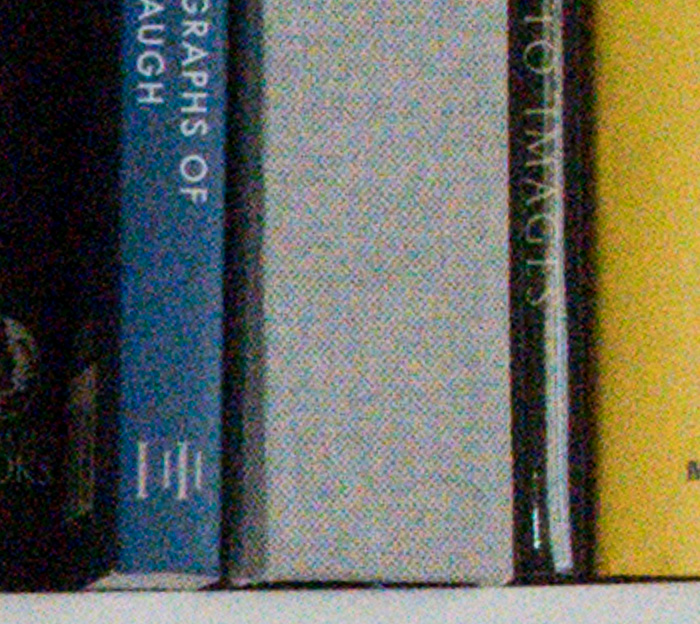
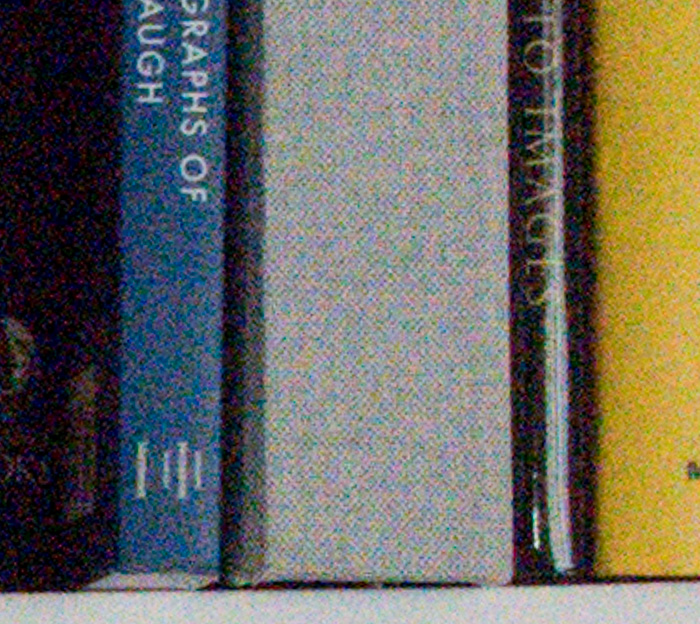
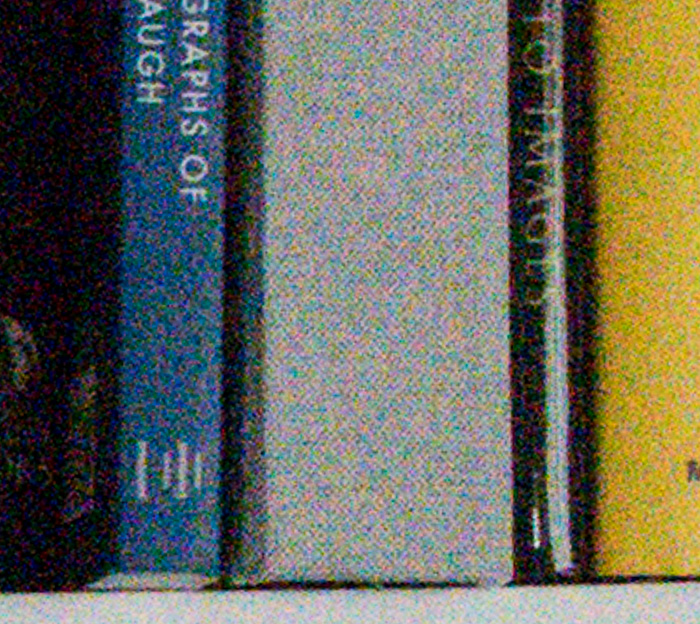
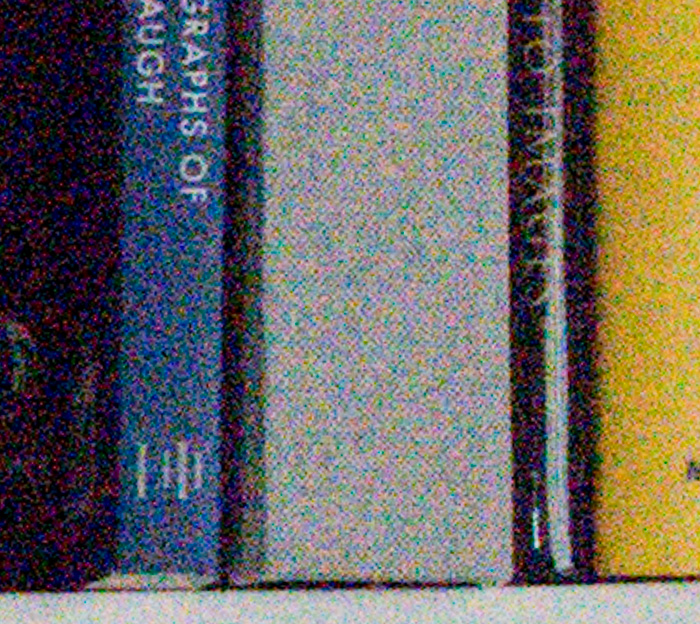
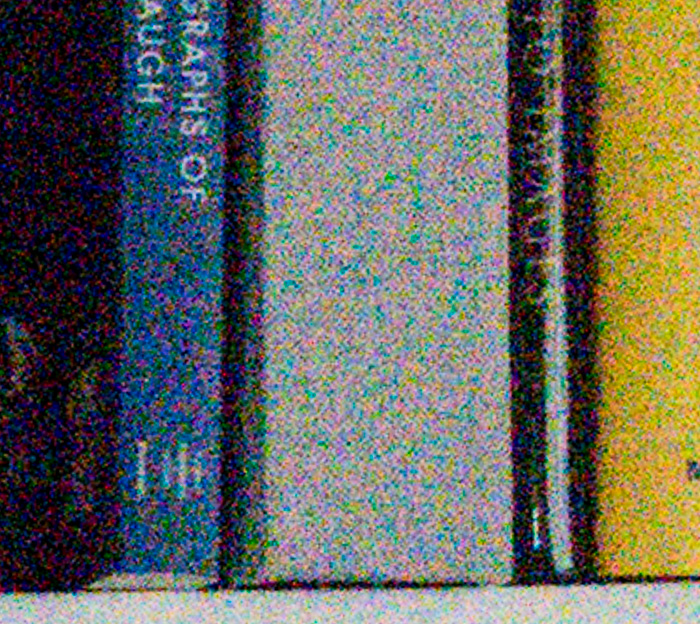
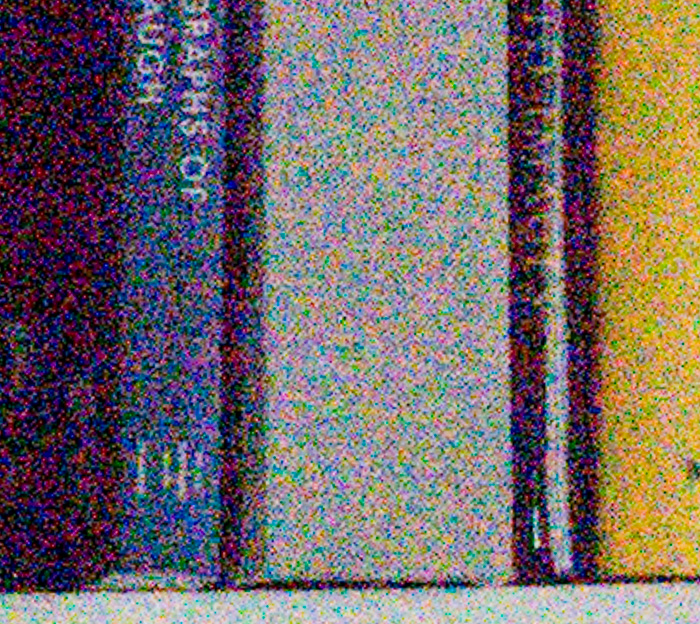
Looks like pushing in the camera is better even up at ISO 3200. That’s what the read noise curves indicated, and that’s what happens in real life.
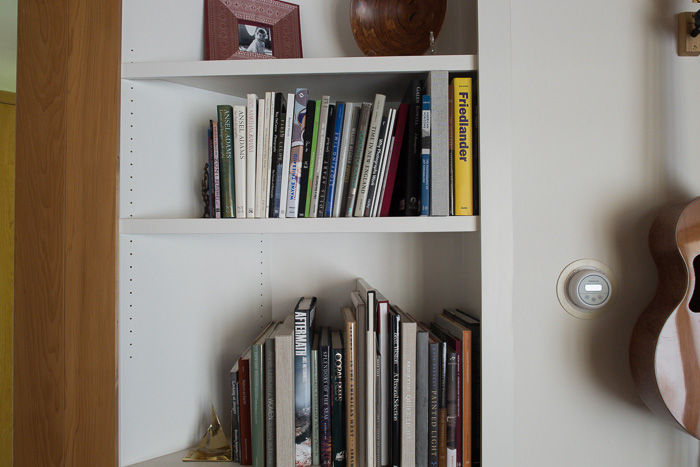
Leave a Reply